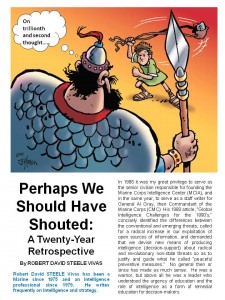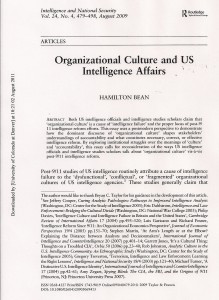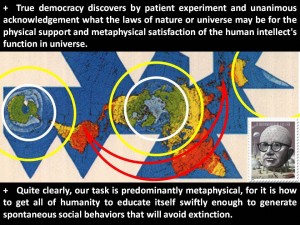This is a vitual article, declined by Joint Force Quarterly. It is available for formal publication.
Journal: DoD Eyes Program Cuts To Fill $60B Shortfall
MilitaryAs the Pentagon prepares to bolster its counterinsurgency capabilities, the big winners appear to be light intratheater cargo planes, unmanned aerial vehicles, countermine warfare systems. Losers may include amphibious craft, heavy armored vehicles and air defense systems, according to defense officials and experts.
. . . . . . .
Unless DoD gets billions more from the White House, the money will be shifted from existing weapon programs to new irregular warfare tools, and to efforts to gird the Navy and Air Force to fight a major conventional war, Ochmanek said.
. . . . . . .
The Navy and Air Force will address “higher-end gaps” related to a major conventional war with a peer military.
+++++++Phi Beta Iota Editorial Comment+++++++
The profound ignorance of history and strategy within the most senior ranks of the Pentagon (i.e. the Policy and Acquisition elements ignoring Intelligence) is not surprising, but continues to disappoint.
$60 billion within a budget that is close to $1 trillion a year now is chump change. This is less than a 10% shift and comes under the heading of “cosmetics.” While the Air Force does indeed need redirection, both an increase in the C-130 and other innovative intra-threater delivery devices (e.g. geo-guided precision air drops), and the Air Force desperately needs a long-haul lift capability, the Air Force cannot be trusted to get this right as their leadership is currently oriented. Similarly, the Navy needs a 450-ship littoral Navy, a distributed Navy with many small platoforms able to execute the “pile-on” operational concept devised in 1992, but that is not where the Navy will spend the money–they are too busy justifying strategic nuclear submarines with five-foot wide tubes as their primary “Irregular Warfare” platform.
The Army Strategy Conference got it right in 1998–not only do we need to abandon the two theater concept (how very sad that it should take Versailles on the Potomac 21 years to catch up with the Army's Strategic Studies Institute)–but the Pentagon needs to understand the 1+iii (One Plus Triple Eye) concept advanced in 1998 and confirmed in 2008 at the Army Strategy Conference focused on Rebalancing the Instruments of National Power.
From where we sit (the cheap seats), the USA appears to lack a national strategy, a foreign affairs strategy, a military and military support to Whole of Government strategy, and a military acquisition strategy. Nothing has changed–just the specific words used to pay lip service to fad of the day, Irregular Warfare.
Historical References:
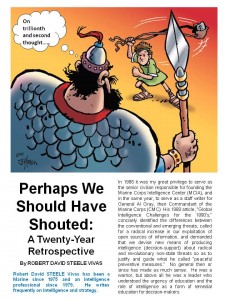

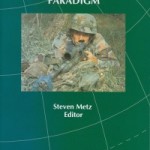
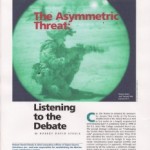
Contributing Editor: Franklin “Chuck” Spinney
Authors & Editors
The original modern whistle-blower, whose friends got him the cover of TIME Magazine to protect him from vengeful senior policy-makers who did not wish to hear truth spoken to power. Below is his book, still the most trenchant and relevant and certain NOT to be read by anyone engaged with the Quadrennial Review (QDR) or 2010, which is already known to be focusing, at the USD Policy level, on three challenges: China, China, and China (China space, China sea, China cyber).

Focusing on China to justify long-haul high-end weapons and mobility and space systems we do not need is NOT to be confused with having a “China Strategy,” or any strategy at all. As one wag advised us today, first the politicos decide what they want to do, then they convince themselves that whatever they decided to do is a strategy.
Irregular Warfare (IRWF), IInformation Operations (IO), and everything else we actually need appear to be in line for lip service, nothing more.
2010 NEW: Chuck Spinney's Personal Blog The Blaster
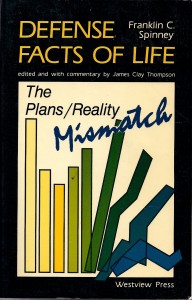
Reference: Organizational Culture and US Intelligence Affairs
Articles & Chapters, Director of National Intelligence et al (IC)Journal: Marcus Aurelius Flags Force Protection Blinders
Military, Peace IntelligenceProtection Rackets
By Christopher Dickey | Newsweek Web Exclusive
Jul 31, 2009
In Afghanistan, Americans should deploy Pvt. Social Worker and Maj. Sociologist.
PBI: The conclusion first:
“You have to learn to discriminate if you're going to win,” said Villalobos. “And in Afghanistan, that's the problem. You don't know how to do that. You don't speak the languages; you don't understand the cultures. And then you have two other problems. First, you are the invader, the outsider.” And that's not going to change. “And second, you add to this the problem with your own record of human-rights violations.” Villalobos mentioned the Iraq horror picture show at Abu Ghraib in 2004 and the long history of abuses at the Bagram military base.To achieve anything in that sort of environment, soldiers have to be willing and able to move around among the public. But the “force protection” that is at the heart of so many U.S. military tactics and procedures makes that awkward if not impossible. You can't convince the people you can protect them from the insurgents, after all, if you look like you're not sure you can protect yourself. They just ask why you're there in the first place. And that question is increasingly hard to answer.
PBI: Now the middle meat:
“Afghanistan,” said Villalbos, “is super complicado.”
“In the old days, your problem was to defeat the enemy, and it didn't matter which way you did it,” the veteran guerrilla told me. “We had rural societies that were cut off from each other; you could eliminate your enemies without people seeing, and you could create a long peace that way. But in a world that is more interconnected, the idea of human rights has become more universal, and there has developed a direct relationship between human rights and military effectiveness.” Is McChrystal reading Villalobos? They seem to be very much on the same page.
As Villalobos sees it, the power to intimidate is much more limited than it used to be, and the risk of too much intimidation is that you will scare civilians right into the arms of your enemies. (Indeed, this was one of Al Qaeda's big mistakes in Iraq.) “Too much discussion about human rights has been about ethics,” said Villalobos, “and it's not only an ethical problem, it's an operational problem. The army of the future needs officers that are sociologists and soldiers that are social workers.
PBI: Read the beginning and other bits by clicking the Newsweek logo.
+++++++Marcus Aurelius Comment+++++++
Quite possibly, much of the force protection problem can be traced to a terrorist attack on a US bus Honduras in the late 1980s. That influenced future Southern Command (Latin America) commander GEN George Joulwan who later was European command commander during the Balkans interventions. GEN Joulwan's very robust view of force protection arguably set the tone for much of what our forces are doing today in the CENTCOM AOR.
+++++++Phi Beta Iota Editorial Comment+++++++
“Force Protection” is code for “Friendly Casualty Aversion” as well as the US Army's old mind-set of not allowing commanders any latitude in the way of mistakes–zero tolerance paved the way for micro-management and micro-reporting, and that is how the US Army trains, equips, and organizes. It became effective at killing indiscriminately and very ineffective at winning and holding ground and the hearts and minds on that ground. The Battle of Jutland and the “Rules of the Game” lessons learned and not learned by the British Empire apply equally to the American Empire. What this boils down to is that the Americans have substituted technology for thinking and doctrine for strategy. There is no good strategic reason for being in Afghanistan, nor is there a good strategic reason for continuing to spend $1 trillion a year on a 1950's force structure model, and now toward $90 billion a year on a secret intelligence community optimized to cover Soviet communications and little else. At the same time, between partisan ideology, Wall Street special interests, and bureaucratic corporatism, US foreign policy can safely be said to be–we quote Madeline Albright–the equivalent of “gerbils on a wheel.” See the other book below by Morton Halperin, a book that includes as one of the “rules of the game,” “Lie to the President if you can get away with it.” With a lack of integrity so prevasive, America is her own worst enemy.


Journal: US Intelligence–Millions Studying TRUST
Military
With a tip of the hat to Intelligence Online from France, the ONLY intelligence newsletter in English that we consider a “must read,” below, with a link to Intelligence Online, is a short story on IARPA (Intelligence Advanced Research Projects Activity) plans to invest in a multi-year program to study and detect signs of trust and mis-trust.
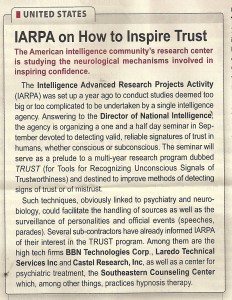
We are of course inspired by any attention, however peripheral, to the basics of trust. Presumably IARPA will discover early on that a Nobel Prize was awarded to the person who demonstrated that trusts lowers the cost of doing business; they might then discover that trust is tangibly and measureably associated with clarity, diversity, integrity, and sustainability; and that trust flourishes in environments or cultures that respect morality, legitimacy, reciprocity, and transparency.
This spectacular mis-application of the taxpayer's resources is right up there with DARPA (Defense Advanced Research Projects Agency) funding of combat robots for the future programmed to not commit warcrimes.
Programming the Perfect Soldier
The Ethics of “Autonomous” Lethal Robots
Brenda Ann Burke Dec 15, 2008

Instititute for Ethics and Emerging Technologies
Killer robots in war
Russell Blackford Metamagician and the Hellfire Club
Definitions: The Basics
Definitions
Robert David STEELE Vivas has committed himself to being intelligence officer to the public, and to the five billion poor in particular, for the balance of his life.
Below are some definitions that matter, as of 1 August 2009 [this is a work in progress, will try to complete it soon, and then future definitions will be separate postings]
BRAIN: Only a living creature can have a brain, an organic or biological device that has over billions of years evolved to its present state. The following quotation from James Bamford is instructive; it is the final sentence of his book, BODY OF SECRETS: Anatomy of the Ultra-Secret National Intelligence Agency (page 613)
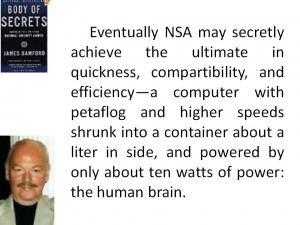
COLLECTIVE INTELLIGENCE (CI): Collective Intelligence overcomes groupthink and individual cognitive biases by leveraging a process of consensus decision-making that respects–even demands–diversity of inputs and perspetives. At its best it can be a society of the human mind, achieving conscious evolution as a species. CI is a return to the precepts ofthe Founding Fathers, and in particular Thomas Jefferson and James Madison. The industrial era, characterized by Lionel Tiger as “The Manufacture of Evil,” separated the public from both information and elite decision-making, while still taking public money. Bureaucracy fostered secrecy, and secrecy fostered pathology. Collective intelligence restores the power of the people over their commonwealth, and neutralizes the power of vested interests that manipulate information to concentrate wealth. NOTE: a fuller definition that draws on Robert Steele's many publications can be found at WordIQ, which tends to be more balanced than Wikipedia. Colloquial terms, each a book title, include Smart Mobs, Groundswell, Here Comes Everybody, Army of Davids, Wikinomics, and Wealth of Networks.
DATA: The raw direct human observation or articulation, raw image, raw signal, raw signature, or in machine terms, the lowest possible element of information that can be isolated in and of itself with its own provenance.
DATA MINING: The direct exploitation of information already in-hand, or procured for a specific investigation i.e. generally internally-generated and oriented. Often mis-represented as Business Intelligence. See also Knowledge Management. At its best, Data Mining is a huge fraud buster, detecting patterns of import-export tax avoidance, money laundering, and insurance fraud.
DECISION-SUPPORT: The conversion of information, which costs money, into intelligence, which makes money–or achieves other goals, public, and private, of specific interest to a specific individual or body making a decision of import. See also Intelligence. An alternative for those organizations such as the United Nations that have long been abused by the confusion of secret sources & methods with the world “Intelligence.”
EARTH INTELLIGENCE (EARTHINT): Earth Intelligence, the subject of a new book (the second book to be published by the Earth Intelligence Network, the first was on Collective Intelligence) is defined by its outcome, the creation of a prosperous world at peace. We have adopted Buckminster Fuller's objectives as our own.

